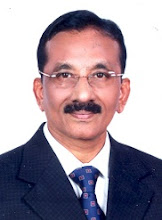The Maha Kumbh Mela is
one of the largest and most significant religious gatherings in the world. In
2025, the Maha Kumbh Mela will be held in Prayagraj (formerly Allahabad), Uttar
Pradesh, from January 14 to February 262.
Different Types of Kumbh Mela
There are four types of Kumbh Melas, each with varying frequencies and significance:
- Magh Mela:
This is an annual event held in Prayagraj during the Hindu month of Magha
(January-February). It is also known as the "mini Kumbh Mela".
- Kumbh Mela:
This occurs every 12 years and rotates among four sacred sites: Haridwar,
Prayagraj, Nashik, and Ujjain. It is a major pilgrimage, drawing millions
of devotees.
- Ardh Kumbh Mela:
This takes place every six years, midway between two Purna Kumbh Melas. It
is held in Haridwar and Prayagraj.
- Maha Kumbh Mela:
This is the most significant and rarest of all Kumbh Melas, occurring only
once every 144 years in Prayagraj. It is considered the most auspicious
and attracts the largest gatherings of pilgrims.
Key Details and Arrangements for Maha Kumbh Mela 2025:
- Dates and Location:
- The event will take place at the Triveni Sangam, the confluence of the Ganga, Yamuna, and the mythical Saraswati rivers.
- The festival begins on January 14, coinciding with Makar Sankranti, and concludes on February 26, marked by Maha Shivratri.
- Significance:
- The Kumbh Mela is rooted in ancient mythology, specifically the Samudra Manthan, a cosmic battle between gods and demons over the nectar of immortality.
- Devotees believe that taking a ritual dip at the Triveni Sangam during this period cleanses sins and grants spiritual purification.
- Key Bathing Dates (Shahi Snans):
- Paush Purnima: January 13, 2025
- Makar Sankranti (First Shahi Snan): January 14, 2025
- Mauni Amavasya (Second Shahi Snan): January 29, 2025
- Basant Panchami (Third Shahi Snan): February 3, 2025
- Maghi Purnima: February 12, 2025
- Maha Shivratri: February 26, 2025
- Cultural and Spiritual Activities:
- The event features a vibrant blend of traditions, including Shahi Snans (Royal Baths), spiritual discourses, yoga sessions, and devotional music performances.
- The participation of Akharas (religious groups) and Naga Sadhus (ascetic warriors) adds to the spiritual fervor.
- Infrastructure and Safety Measures:
- Extensive preparations have been made to accommodate the anticipated influx of over 200 million visitors.
- Enhanced infrastructure, including upgraded roads, bridges, and railways, has been put in place.
- Advanced surveillance systems, drones, and a dedicated police force ensure the safety of attendees.
The Maha Kumbh Mela has seen
participation from numerous important dignitaries over the years. Here are some
notable figures who have attended the event:














